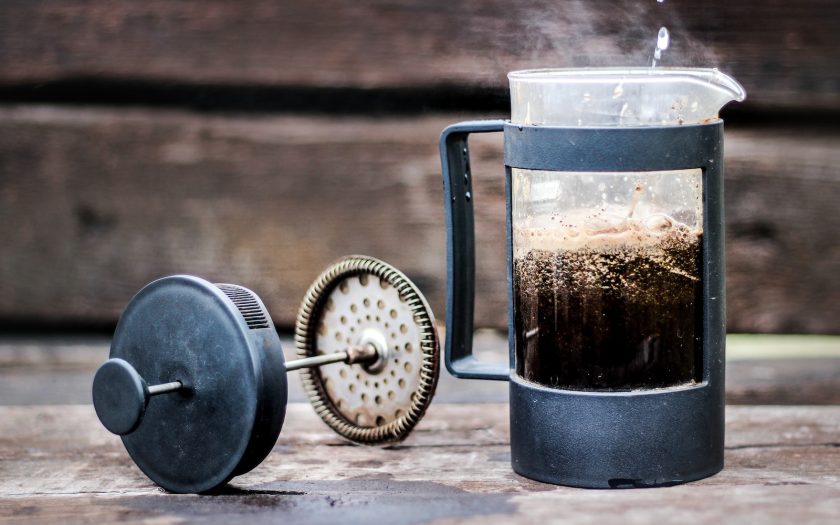Hello, fellow coffee enthusiasts! I’m Lisa Brewster, your trusty guide through the wonderful world of coffee. Today, we’re delving into one of my favorite topics – the AeroPress. For those of you who’ve been following my coffee escapades on the CoffeCraftCue blog for a while, you know that I’ve always had a penchant for experimenting with my brews. And what’s more exciting than pitting two popular AeroPress techniques against each other: the Inverted and Traditional methods? Let’s dive right in and see what these brewing techniques have to offer.
The AeroPress, A Quick Introduction
For the uninitiated, the AeroPress is a nifty little coffee maker that’s all the rage in the coffee world. It was invented by the genius Alan Adler, who wanted to create a device that could make a strong and smooth cup of coffee quickly. And voila, the AeroPress was born!
The Traditional Method
We’ll start with the basics. The Traditional method is, well, the traditional way of brewing coffee with an AeroPress. Here’s how it goes:
Gather Your Tools:
You’ll need your AeroPress, coffee grounds, hot water (just off the boil), a filter, and the standard plunger.
Insert a Filter:
Place a paper filter in the filter cap and attach it to the AeroPress.
Add Coffee:
Place the AeroPress on top of your coffee mug and add your desired amount of coffee grounds.

Pour Water:
Pour hot water into the AeroPress and stir the mixture for about 10 seconds. This is known as the “bloom” stage, where the coffee grounds release gases.
Attach the Plunger:
After stirring, attach the plunger and let it sit for a minute or two.
Press Down:
Slowly and firmly press the plunger down to extract your coffee into your cup.
Enjoy! Sip your coffee and savor the deliciousness.
Now, that’s the classic way to do it, but what’s this Inverted method I keep talking about? Well, hang tight!
The Inverted Method
The Inverted method is like the Traditional method’s quirky cousin. It’s become a favorite among coffee aficionados, and here’s how it’s done:
Flip the AeroPress:
Start with your AeroPress upside down, so the plunger is at the bottom.
Assemble the Coffee Grounds:
Add your coffee grounds to the upturned AeroPress.
Add Water:
Pour hot water into the AeroPress up to your desired level, and give it a gentle stir.
Attach the Filter:
Place a filter in the filter cap and attach it to the AeroPress.
Brew Time:
Let your coffee brew for a set amount of time, depending on your preferred strength.

Plunge Carefully:
When the brewing time is up, attach the plunger and press down gently.
Savor the Flavor:
Flip the AeroPress onto your cup and plunge until your coffee is safely in the cup. Enjoy!
Now that you know the basics, let’s dive deeper into the differences between these two methods.
Flavor Profiles
One of the most exciting parts of experimenting with AeroPress brewing techniques is the flavor. The Traditional and Inverted methods produce different flavor profiles, and your preference depends on your palate.
Traditional Flavor
The Traditional method is known for producing a lighter and cleaner cup of coffee. The paper filter does a great job of removing most of the oils and fines from the coffee, resulting in a brew that’s bright and vibrant. It’s perfect for those who enjoy the clarity of the coffee’s flavor notes.
Inverted Intensity
The Inverted method, on the other hand, creates a more robust and intense cup of coffee. Since the coffee grounds are fully immersed in the water during the entire brewing process, you get a fuller extraction of oils and flavors. This method is excellent for those who prefer a bolder, richer brew with more body.
Experimentation Time
Now that you know the basics, it’s time to experiment! Here are some variables you can play with for both methods.
Coffee Beans
The type of coffee beans you use can dramatically affect the taste of your coffee. Try experimenting with different origins and roasts to find your favorite flavor profile. For example, a light roast from Ethiopia may shine through with fruitier notes using the Inverted method, while a medium roast from Colombia may produce a well-balanced cup with the Traditional method.
Grind Size
The grind size is crucial in your AeroPress adventures. A finer grind, like table salt, is ideal for the Traditional method, as it allows for a quicker extraction and less bitterness. On the other hand, a coarser grind, akin to sea salt, works wonders with the Inverted method, as it requires a longer brew time to reach its full potential.
Water Temperature
The temperature of your water matters more than you might think. For the Traditional method, use water just off the boil (around 200°F or 93°C). With the Inverted method, a slightly cooler temperature (around 185°F or 85°C) can help control the extraction and avoid over-brewing.
Brew Time
The time you let your coffee brew is entirely up to you. For the Traditional method, a shorter brew time (around 30 seconds to 1 minute) is ideal. In the Inverted method, you can extend the brew time to anywhere from 1.5 to 3 minutes, depending on your desired strength.
Stirring
How vigorously you stir your coffee grounds in the AeroPress can impact the extraction. For the Traditional method, a gentle stir is sufficient to ensure even saturation. In the Inverted method, you can be more aggressive to maximize flavor extraction.
Plunge Speed
The speed at which you press down the plunger can influence your coffee’s taste. For a cleaner cup, use slow and steady pressure with the Traditional method. With the Inverted method, you have more control over the extraction process, so adjust the plunge speed to suit your taste.
When to Use Each Method
So, when should you use the Traditional method, and when should you opt for the Inverted? Here are some scenarios to consider:
Traditional Method
You want a clean, bright cup of coffee.
You’re using a light or medium roast coffee bean.
You’re in a hurry and need your coffee fast.
You prefer a hassle-free brewing process.
Inverted Method
You crave a bold, intense coffee with a fuller body.
You have the time to savor the brewing process.
You want to experiment with longer brew times and temperature control.
You appreciate the versatility to fine-tune your brew to your exact preference.
My Personal Verdict
After years of playing around with both AeroPress methods, I have to say that I enjoy both, but I often find myself reaching for the Inverted method. There’s something captivating about the depth and intensity it brings to the cup. It’s like the espresso of AeroPress methods, allowing you to savor the nuances in your coffee.
However, I’ll never turn my back on the Traditional method, especially when I’m in a rush or when I have a batch of delicate, floral
Olivia Sinclair is the creative mind behind the “Coffee Machines and Other Things Affiliate” blog. With a passion for all things coffee-related and a keen interest in the world of affiliate marketing, Olivia has managed to blend her two passions into a successful online venture. Born and raised in Seattle, the heart of coffee culture, Olivia’s love for coffee started at an early age. She spent her formative years exploring local coffee shops, learning the art of brewing, and appreciating the nuances of coffee beans from around the world.
After completing her Bachelor’s degree in Marketing and Communications, Olivia embarked on a career that led her into the world of affiliate marketing. She soon realized that her true calling lay in combining her marketing expertise with her love for coffee. This realization gave birth to the “Coffee Machines and Other Things Affiliate” blog, where Olivia shares her in-depth knowledge of coffee machines, brewing methods, and other related products. Her insightful reviews and well-researched recommendations have made her a trusted source for coffee enthusiasts seeking guidance on their purchases.
When she’s not busy exploring the latest coffee trends and testing new products, you can find Olivia hiking in the beautiful Pacific Northwest or honing her latte art skills. She believes in the power of a great cup of coffee to brighten anyone’s day and is dedicated to helping her readers find the perfect coffee-related products to elevate their coffee experience.
